Hey folks there! Just imagine walking on a busy street and spotting a balcony full of cute Terracotta Planters glowing in the sun. Feels calm right away, doesn’t it?
These simple clay pots are pure magic — they breathe, keep plants happy, and bring that earthy vibe no plastic pot can match. Terracotta Planters are old-school cool, made from baked earth but perfect for modern homes.
Whether on a balcony, rooftop, or office corner, they make any space feel alive and fresh. Small, simple, and full of charm — Terracotta Planters are nature’s way of saying slow down and breathe.
🏺 History of Terracotta Planters
🌍 Ancient Beginnings
- Terracotta, meaning “baked earth,” has been used by humans for over 5,000 years.
- The earliest evidence of terracotta objects comes from Mesopotamia, Egypt, and the Indus Valley Civilization, where clay was shaped and fired for daily use.
- Planters, jars, and storage pots were among the first terracotta objects, valued for their strength, breathability, and natural cooling properties.
Terracotta in Indian Tradition
- In India, terracotta has a rich cultural presence, visible in the Indus Valley pottery and later in decorative temple art, especially in Bengal and Odisha.
- Farmers and households used terracotta pots to store water and grow sacred plants like Tulsi, showing its deep connection with both nature and spirituality.
- Over time, terracotta planters became a symbol of simplicity and sustainability in Indian homes.
🌱 From Rural Roots to Urban Spaces
- Traditionally, terracotta planters were common in rural courtyards and village gardens.
- With urbanization, their popularity declined for a while as plastic and cement pots became widely available.
- However, growing awareness about eco-friendly lifestyles and sustainable design has brought terracotta back into cities.
🏙️ Modern Revival
- Today, terracotta planters are valued not just for gardening but also for aesthetic appeal in balconies, rooftops, and public spaces.
- Architects and urban designers are reintroducing terracotta in eco-friendly projects because of its porous nature, recyclability, and cultural charm.
- What began as a rural household necessity is now a modern urban design trend, linking ancient tradition with sustainable living.
Materials Used and Steps of Making
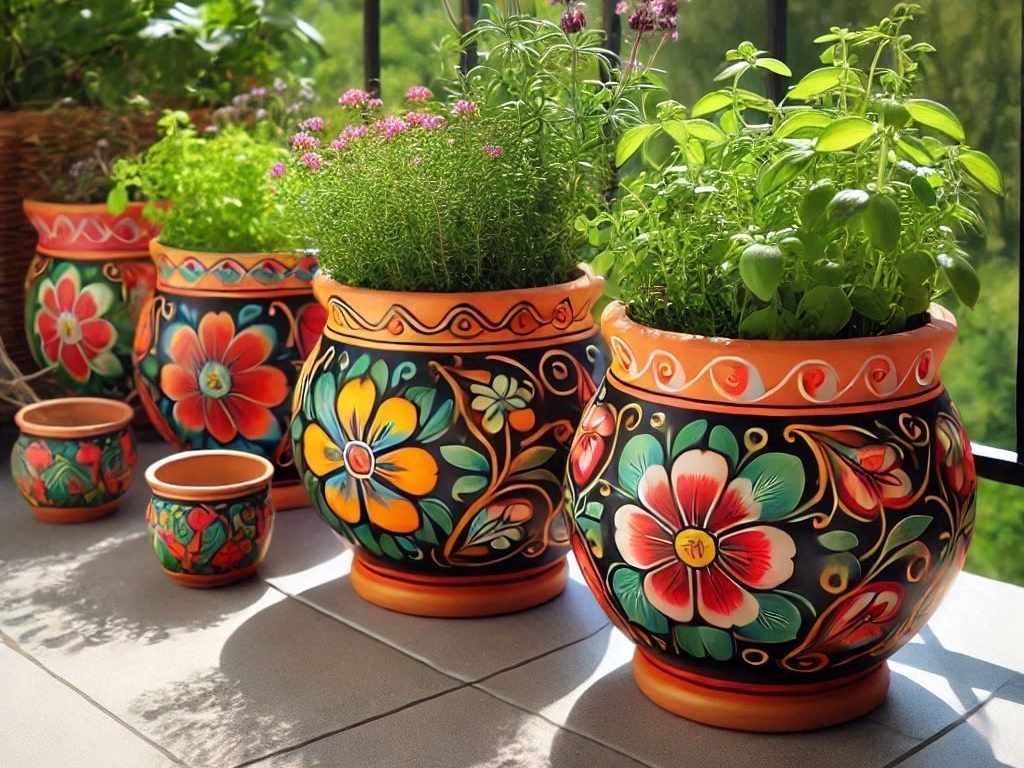
Terracotta planters have become a popular choice for urban gardening due to their natural, eco-friendly qualities and timeless aesthetic.
But have you ever wondered what goes into making these earthy beauties? Let’s explore the materials and the step-by-step process of creating terracotta planters.
1. Materials Used in Terracotta Planters
The beauty of terracotta lies in its simplicity. Only a few natural materials are needed, yet the results are durable and elegant.
- Natural Clay
- The main ingredient for terracotta is clay, sourced from riverbeds, pits, or quarries.
- Rich in minerals, it gives the planter its reddish-brown color after firing.
- Clay is malleable when wet, allowing artisans to shape it into pots, bowls, and decorative planters.
- The main ingredient for terracotta is clay, sourced from riverbeds, pits, or quarries.
- Water
- Water is used to soften the clay and make it workable.
- The correct ratio of water to clay is crucial; too much water weakens the structure, too little makes it hard to shape.
- Water is used to soften the clay and make it workable.
- Sand (Optional)
- Sometimes a small amount of sand is mixed with clay to prevent cracking during drying and firing.
- It adds strength and durability to the final product.
- Sometimes a small amount of sand is mixed with clay to prevent cracking during drying and firing.
- Natural Pigments (Optional)
- Although most planters retain the natural clay color, some artisans add natural pigments to achieve different shades.
- These pigments are eco-friendly and safe for plants.
- Although most planters retain the natural clay color, some artisans add natural pigments to achieve different shades.
- Glazes (Optional)
- In some modern terracotta planters, a thin layer of eco-friendly glaze is applied to make them water-resistant.
- Glazing is minimal in urban eco-friendly designs to maintain breathability for plant roots.
- In some modern terracotta planters, a thin layer of eco-friendly glaze is applied to make them water-resistant.
2. Steps of Making Terracotta Planters
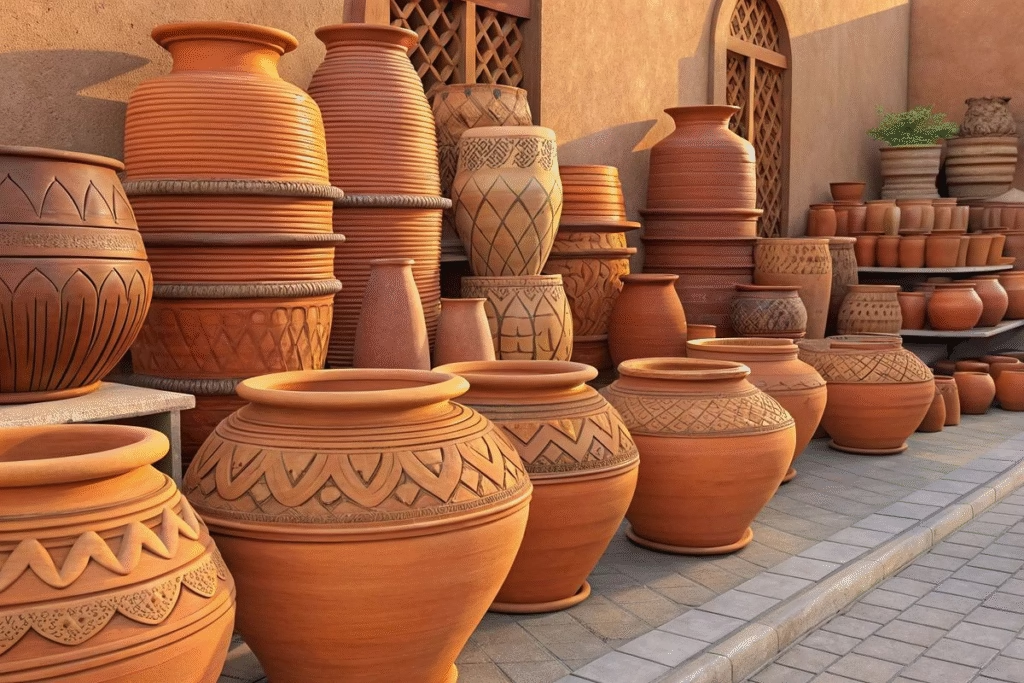
Creating a terracotta planter is an art form that combines skill, patience, and precision. Here’s the step-by-step process:
Step 1: Preparing the Clay
- Clay is collected and cleaned of stones, roots, and impurities.
- It is kneaded thoroughly with water to achieve a smooth, workable consistency.
- Sometimes, sand or natural fibers are mixed in for added strength.
Step 2: Shaping the Planter
- Hand-Building: Artisans shape planters using hands or simple tools.
- Coiling: Long rolls of clay are stacked and smoothed to form the pot.
- Pinching: Small planters or shallow bowls are shaped by pinching and smoothing the clay.
- Coiling: Long rolls of clay are stacked and smoothed to form the pot.
- Wheel-Throwing: For round, symmetrical planters, a potter’s wheel is used.
- The clay is centered on the wheel, and hands shape it while the wheel spins.
- The clay is centered on the wheel, and hands shape it while the wheel spins.
Step 3: Drying the Clay
- After shaping, planters are left to air-dry for several days.
- Proper drying prevents cracks during firing.
- Drying is usually done in a shaded area to avoid direct sunlight, which can dry the clay too quickly.
Step 4: Carving and Decorating (Optional)
- Before firing, artisans can carve designs, patterns, or motifs into the clay.
- Simple geometric shapes, floral designs, or nature-inspired motifs enhance the aesthetic of urban planters.
Step 5: Firing the Planter
- Dried planters are placed in a kiln for firing.
- Firing temperatures typically range between 800°C to 1,000°C.
- This process hardens the clay, turning it into terracotta and giving it its characteristic reddish-brown color.
Step 6: Finishing Touches
- After cooling, any rough edges are smoothed.
- If needed, a light eco-friendly glaze is applied for minimal water resistance.
- The planters are then ready to hold soil and plants.
Why These Steps Matter for Urban Gardening
- Durability: Proper firing ensures planters last for years, even in outdoor urban spaces.
- Breathability: Natural clay allows air and water to pass through, promoting healthy plant roots.
- Eco-Friendliness: Using natural materials with minimal glaze makes them biodegradable and sustainable.
- Aesthetic Appeal: Handcrafted patterns and natural textures enhance the look of balconies, terraces, and indoor gardens.
Symbols and Motifs in Terracotta Planters
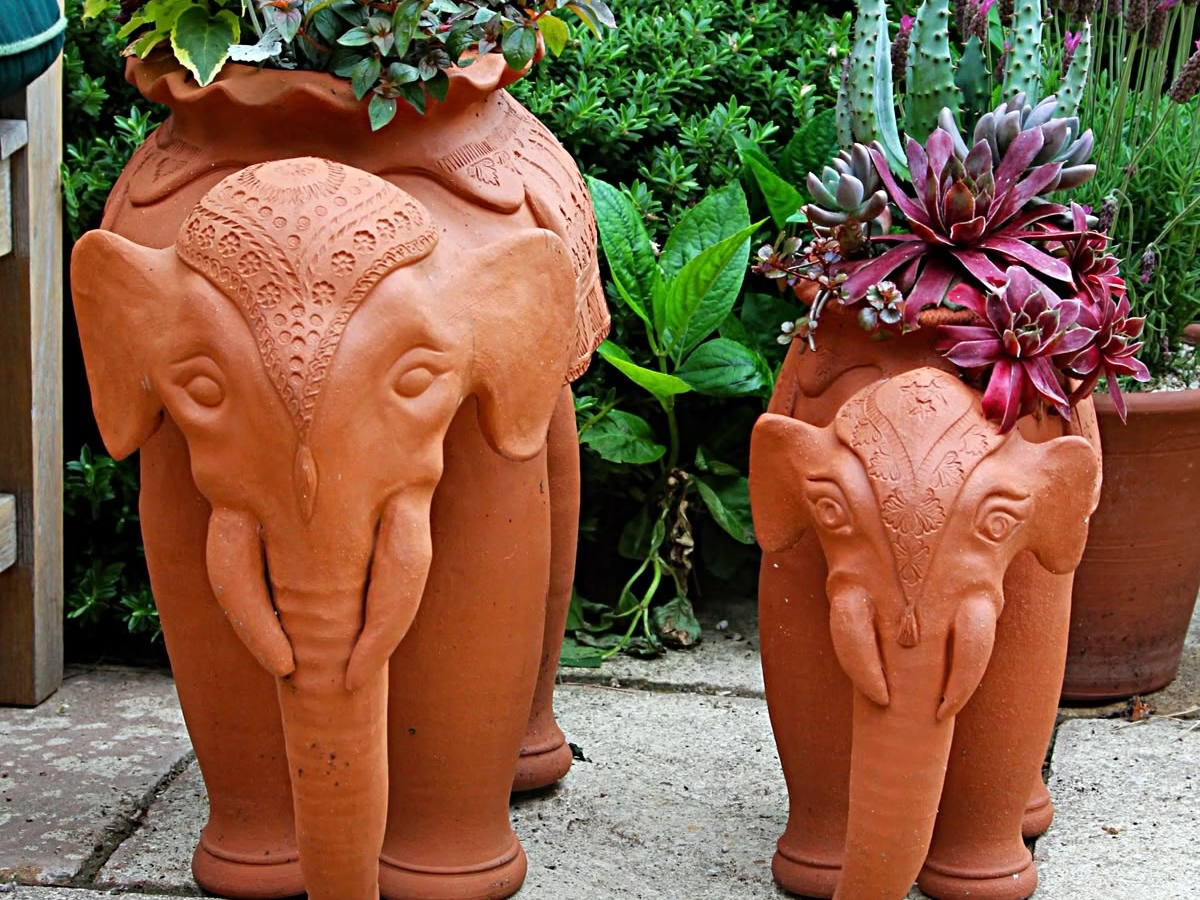
Terracotta planters are not just functional items for holding plants—they are a canvas for centuries-old art, carrying symbols and motifs that add meaning, beauty, and cultural depth to urban spaces.
Every curve, pattern, or imprint on a planter tells a story, reflecting both tradition and the growing eco-conscious lifestyle of modern cities.
1. Nature-Inspired Motifs
- Leaves and Vines
- Symbolize growth, renewal, and the connection between humans and nature.
- Frequently seen along the borders or rims of planters.
- In urban spaces, they remind city dwellers of the calming influence of greenery.
- Symbolize growth, renewal, and the connection between humans and nature.
- Flowers and Blossoms
- Represent beauty, life, and freshness.
- Popular motifs include lotus, marigold, and hibiscus.
- Often engraved or embossed on planter surfaces to create a soothing visual effect.
- Represent beauty, life, and freshness.
- Sun and Celestial Symbols
- Sun motifs symbolize energy, life, and vitality.
- Moons or stars add a spiritual or meditative touch, complementing plants that are part of home or office décor.
- Sun motifs symbolize energy, life, and vitality.
2. Geometric and Abstract Designs
- Diamond and Triangle Patterns
- Convey balance, stability, and harmony.
- Commonly arranged around the body of the planter for a rhythmic, aesthetic appeal.
- Convey balance, stability, and harmony.
- Circular Motifs
- Represent continuity and completeness, echoing the cycle of life in nature.
- Often used as embossed or painted rings to highlight planter openings or bases.
- Represent continuity and completeness, echoing the cycle of life in nature.
- Stripes and Zig-Zags
- Impart energy and movement to otherwise static planters.
- Perfect for contemporary urban spaces where minimalism meets tradition.
- Impart energy and movement to otherwise static planters.
3. Cultural and Traditional Symbols
- Tribal Patterns
- Inspired by local indigenous art forms.
- Reflect the heritage of clay craftsmanship and the deep human connection with earth.
- Adds authenticity to eco-friendly décor while celebrating cultural roots.
- Inspired by local indigenous art forms.
- Animals and Birds
- Elephants symbolize strength and stability.
- Birds, like peacocks or sparrows, symbolize freedom and joy.
- Small engraved animal motifs can make urban gardens feel more alive and vibrant.
- Elephants symbolize strength and stability.
- Religious Symbols
- Some planters feature subtle motifs like conches, lotuses, or geometric yantras.
- They bring a sense of harmony and spiritual calm into personal or communal green spaces.
- Some planters feature subtle motifs like conches, lotuses, or geometric yantras.
4. Textural Patterns for Aesthetic Appeal
- Ridges and Grooves
- Add a tactile dimension, making planters easy to grip and visually interesting.
- Can also help in better water drainage, blending function with beauty.
- Add a tactile dimension, making planters easy to grip and visually interesting.
- Hand-Imprinted Designs
- Small hand impressions or carved motifs make each planter unique.
- Highlight the artisan’s touch, bridging traditional craft with modern eco-living.
- Small hand impressions or carved motifs make each planter unique.
- Layered Patterns
- Combining geometric and floral motifs creates a rich, multidimensional look.
- Adds depth and character to urban planter arrangements, making them stand out in minimalist city décor.
- Combining geometric and floral motifs creates a rich, multidimensional look.
📊 Statistics: Growing Popularity of Eco-Friendly Planters
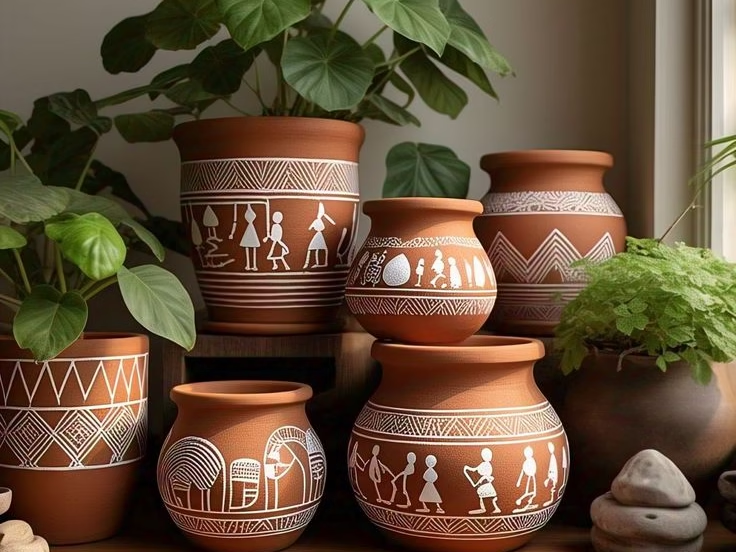
Eco-conscious living and sustainable urban gardening are becoming increasingly important in cities. Terracotta planters, with their natural composition and aesthetic appeal, have emerged as a preferred choice for homeowners, gardeners, and interior designers.
Let’s explore some interesting statistics and trends that show why these planters are gaining popularity.
1. Market Growth of Terracotta Planters
- The global market for terracotta and clay planters has grown by over 12% annually in the last five years.
- In urban areas, eco-friendly gardening products account for nearly 30% of total garden supply sales, showing a strong preference for sustainable materials.
- E-commerce platforms report that terracotta planters are among the top 5 bestselling planters, competing closely with ceramic and plastic alternatives.
2. Adoption in Urban Spaces
- Surveys indicate that more than 40% of city households prefer terracotta planters for balcony and terrace gardening.
- Apartment and condo communities are increasingly using terracotta pots in shared green spaces and rooftop gardens, reflecting an urban trend toward sustainable landscaping.
- Small-scale urban farmers and rooftop gardeners show a 60% higher preference for terracotta over plastic or metal planters due to better soil aeration and water retention.
3. Eco-Friendly Consumer Awareness
- A 2023 urban lifestyle survey found that 52% of consumers prioritize eco-friendly products, including planters, even if the price is slightly higher.
- Millennials and Gen Z buyers contribute significantly to this demand, valuing both aesthetics and sustainability.
- Terracotta planters are perceived as biodegradable and non-toxic, making them a safer choice for families and pets.
4. Social Media and Trends
- Instagram and Pinterest reports show a 70% rise in posts featuring terracotta planters in the last two years.
- Influencers and urban gardening communities actively promote terracotta as a chic, environmentally responsible option for home gardens.
5. Environmental Impact Metrics
- Compared to plastic planters, terracotta reduces carbon footprint by up to 60% over its lifecycle.
- Reusable and long-lasting, one terracotta planter can last 10–15 years, reducing the frequency of replacements and waste.
Challenges: Balancing Tradition with Modern Needs
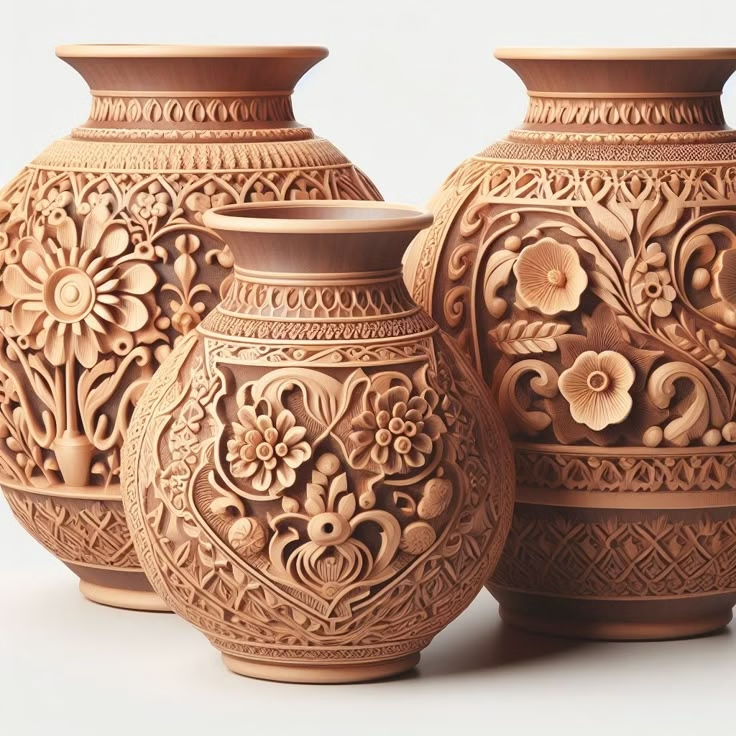
While terracotta planters have seen a revival in urban spaces due to their eco-friendly nature and aesthetic appeal, integrating this age-old craft with modern urban requirements comes with its own set of challenges.
1. Durability and Strength
- Fragility Issue: Traditional terracotta is naturally porous and brittle, making it prone to cracking or breaking during handling or shipping.
- Urban Usage Pressure: Planters in cities often need to withstand frequent movement, weight from large plants, and exposure to strong winds or accidental knocks.
- Solution Dilemma: Strengthening terracotta (e.g., with glazes or composites) can sometimes compromise its natural breathability, which plants need.
2. Mass Production vs. Handcrafting
- Artisan Dependence: Terracotta planters are traditionally handcrafted, which limits large-scale production.
- Meeting Urban Demand: Rapid urbanization has increased demand for decorative and functional planters. Mass production techniques risk diluting traditional craftsmanship.
- Quality vs. Quantity: Machine-made terracotta may reduce cost but cannot replicate the intricate patterns and natural charm of handmade pieces.
3. Compatibility with Modern Gardening Needs
- Water Retention: While terracotta is excellent for drainage, it can dry out soil quickly in hot urban environments, challenging plant health.
- Size and Design Constraints: Urban balconies or rooftop gardens often need compact, modular, or stackable planters, which traditional designs may not support.
- Integration with Urban Decor: Contemporary urban spaces may require sleek designs or color palettes that traditional terracotta does not always provide.
4. Sustainability vs. Convenience
- Eco-Friendly but Heavy: Terracotta is sustainable but heavier than plastic or metal alternatives, making it less convenient for mobility.
- Energy in Firing Process: Traditional kiln firing uses significant fuel, and modern eco-conscious users may question the carbon footprint.
- Limited Lifespan: While biodegradable, terracotta planters may erode faster in harsh weather, requiring replacement more often.
5. Market Awareness and Acceptance
- Consumer Education: Many urban users are unfamiliar with proper care of terracotta, leading to cracks or damage.
- Cost Factor: Handmade terracotta is often pricier than mass-produced alternatives, limiting adoption despite its sustainability.
- Cultural Disconnect: Younger urban consumers may appreciate eco-friendliness but may not value traditional aesthetics unless properly marketed.
Conclusion
Well, folks, Terracotta Planters are more than just pretty pots. They bring a warm, earthy vibe to balconies, homes, and city spaces while letting plants breathe and grow healthy. Made from natural clay, they mix tradition with modern sustainability, giving us a little piece of heritage in our urban lives.
Using these planters is an easy way to go green, cut down on plastic, and make concrete spaces feel alive. Plus, those hand-carved designs tell stories of art and culture. So, next time you add some greenery to your home, grab a terracotta planter — you are not just growing plants, you are nurturing history, style, and a healthier city all at once.
Also Read:- Sikki Grass Wall Hangings as Office Decor

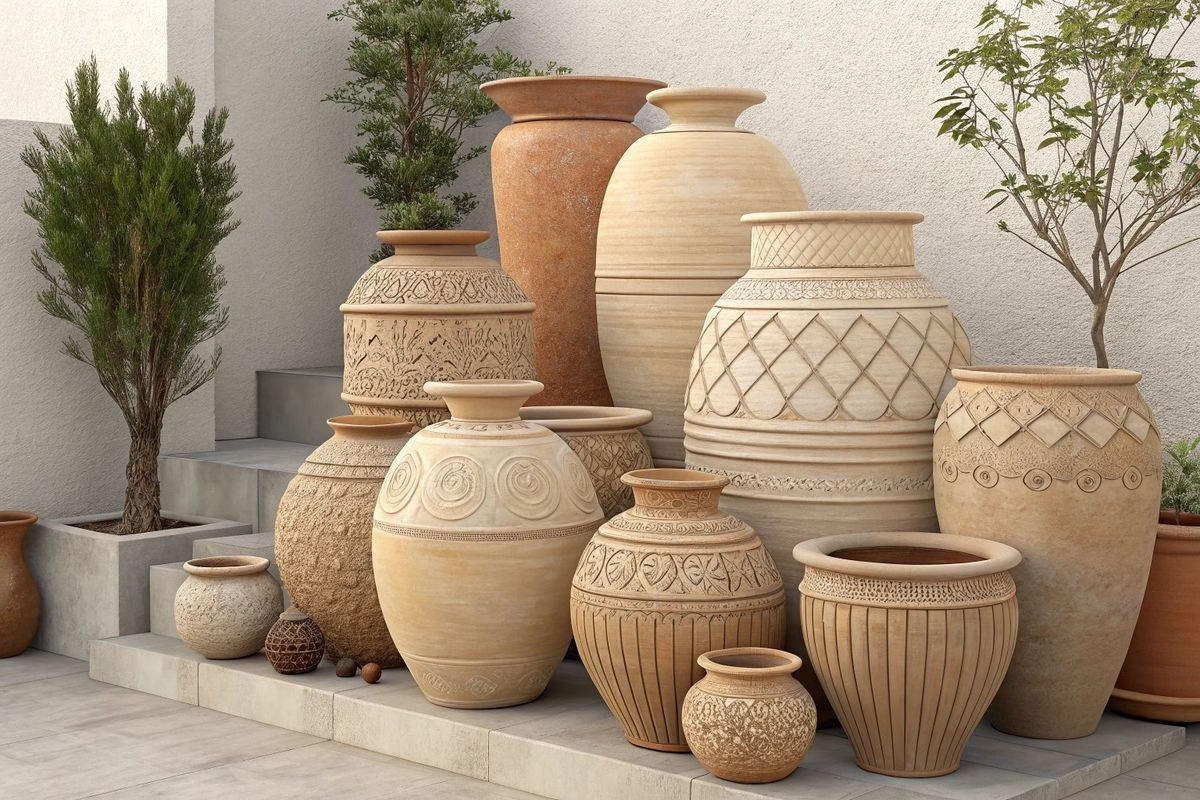
Leave a Reply